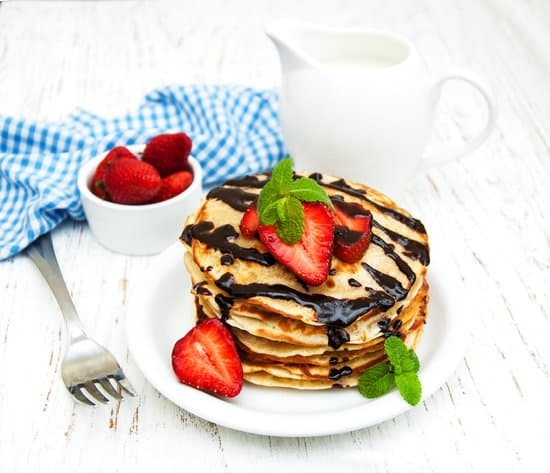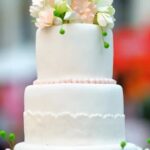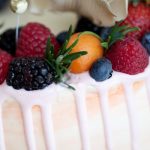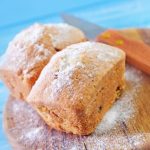Cake decorating is an intricate and creative art form that elevates a simple cake into a stunning masterpiece. Also known as sugarcraft or cake artistry, this skill has gained immense popularity in modern baking, with enthusiasts and professionals alike showcasing their talent through beautifully decorated cakes. The art of cake decorating goes beyond simply making a dessert visually appealing; it involves precision, creativity, and attention to detail to create edible works of art that leave a lasting impression.
The history of cake decorating can be traced back centuries, evolving from simple icing techniques to elaborate designs that incorporate various decorative elements. Over the years, cake decorating has grown into a specialized craft with its own set of techniques and tools. From traditional piping methods to modern fondant sculpting and edible decorations, there are countless ways to adorn a cake and bring creative visions to life.
In this article, we will explore the different types of cake decorating techniques used by professionals and hobbyists alike. We will delve into the essential tools and materials needed for successful cake decorating, highlighting the importance of each item in achieving flawless results. Whether you are a novice baker looking to enhance your skills or an experienced decorator wanting to stay on top of trends, understanding the fundamentals of cake decorating is crucial for creating memorable desserts for any occasion.
History of Cake Decorating
Cake decorating, which can also be referred to as sugarcraft or icing art, has a rich history that dates back centuries. The practice of embellishing cakes with intricate designs and decorations can be traced back to ancient Egypt, where honey was used as an early form of icing. However, it was not until the 17th century that cake decorating became more elaborate and artistic in Europe.
During the Victorian era in England, cake decorating flourished with the introduction of royal icing made from egg whites and confectioner’s sugar. This allowed for intricate piping designs and elaborate decorations on cakes served at tea parties and special occasions. As baking techniques and ingredients advanced, so did the art of cake decorating, leading to the use of fondant, gum paste, and edible colors to create stunning edible masterpieces.
In the 20th century, cake decorating continued to evolve with the introduction of new tools and techniques such as airbrushing, edible images, and sculpting. Today, cake decorating has become a popular form of creative expression for bakers and enthusiasts alike. From simple birthday cakes to elaborate wedding cakes, the art of cake decorating has never been more diverse and exciting.
Types of Cake Decorating Techniques
Cake decorating is an art form that allows bakers to express their creativity and design skills through the medium of cake. There are various techniques used in cake decorating that range from traditional piping to modern fondant designs. One of the most common questions among beginners is, “what is cake decorating called?” The answer lies in the diverse methods and approaches that bakers use to transform a simple cake into a work of edible art.
Piping
Piping is one of the classic techniques in cake decorating that involves using a pastry bag or piping bag to create intricate designs with icing or buttercream. Bakers can use different piping tips to achieve various shapes and textures, such as rosettes, shells, or borders. This technique requires practice and precision to master but can result in beautifully detailed decorations on cakes, cupcakes, and cookies.
Fondant
Fondant is another popular method used in cake decorating, especially for creating smooth surfaces and sculptural elements. Fondant is a pliable sugar paste that can be rolled out and draped over cakes to create a flawless finish. Additionally, fondant can be shaped, cut, or molded into elaborate decorations like flowers, ribbons, or figures. Many professional bakers prefer fondant for its versatility and clean aesthetic in cake designs.
Edible Decorations
Aside from piping and fondant, edible decorations play a crucial role in enhancing the overall look of a decorated cake. These decorations can include sugar flowers, edible pearls, sprinkles, chocolate shards, and even printed images on edible paper.
Edible decorations offer endless possibilities for customization and personalization when it comes to creating stunning cakes for special occasions like birthdays, weddings, or holidays. Experimenting with different edible embellishments can add depth and visual interest to your cake designs while showcasing your artistic flair.
Overall, mastering various cake decorating techniques like piping, fondant work, and edible decorations opens up endless creative possibilities for bakers looking to elevate their baking skills. Whether you’re a hobbyist baker or aspiring professional decorator, learning these methods will allow you to bring your imaginative designs to life on delicious canvases of confectionery delight.
By exploring different techniques and experimenting with new ideas What Is Cake Decorating Called becomes not just an insightful question but also an exciting journey into the world of sugar artistry.
Tools and Materials Needed
Cake decorating, also known as cake art or sugarcraft, is a skill that requires precision, creativity, and a variety of tools and materials to achieve stunning results. To embark on a cake decorating journey, it is essential to have the right equipment at your disposal. Here is a breakdown of the tools and materials needed for successful cake decorating:
- Piping Bags: These are essential for creating intricate designs with frosting or icing. Piping bags come in various sizes and materials such as disposable plastic or reusable cloth.
- Piping Tips: There are countless piping tips available that can help you achieve different textures and patterns on your cakes. From star tips to round tips, having a variety of options can elevate your decorating skills.
- Turntable: A turntable is a useful tool that allows you to smoothly rotate your cake while decorating. This makes it easier to apply frosting evenly and create smooth finishes.
In addition to these basic tools, there are also specialized items that can take your cake decorating game to the next level:
- Fondant Tools: For those who prefer working with fondant, tools like fondant smoothers, cutters, and embossers are essential for creating detailed decorations.
- Molds: Molds come in handy when you want to create uniform shapes or intricate designs on your cakes. They can be used with fondant, chocolate, or even marzipan.
- Edible Decorations: From sugar flowers to edible glitter, having a variety of edible decorations on hand can add flair and personality to your cakes.
By investing in quality tools and materials for cake decorating, enthusiasts can unleash their creativity and produce visually stunning confections that are not only delicious but also works of art. Whether you are a beginner looking to hone your skills or a seasoned decorator aiming to push boundaries, having the right equipment is key to achieving professional-looking results.
Importance of Cake Decorating
The art of cake decorating, also known as sugarcraft or caking, is a creative and visually appealing way to enhance the beauty of cakes for various occasions and celebrations. Through intricate designs using different techniques and materials, cake decorators can transform a simple cake into a stunning masterpiece that not only tastes delicious but also looks extraordinary.
Cake decorating has become increasingly popular in modern baking due to the rise of social media platforms like Instagram, where beautifully decorated cakes are showcased and admired by people all around the world.
One of the key aspects of cake decorating is its ability to add a personalized touch to any special event or milestone celebration. Whether it’s a birthday, wedding, anniversary, or any other significant occasion, a creatively decorated cake can convey emotions, tell a story, or reflect the theme of the event.
For example, a wedding cake adorned with delicate sugar flowers and intricate piping can symbolize love and romance, while a birthday cake featuring fondant figures or characters can bring joy and excitement to the celebration.
In addition to adding aesthetic appeal to cakes, creative cake decorating plays a crucial role in making memorable moments even more special. It has the power to evoke emotions and create lasting impressions on guests and recipients.
Moreover, beautifully decorated cakes can serve as the focal point of dessert tables at parties and events, leaving a lasting impact on attendees. So next time you attend an event or celebration where an exquisitely decorated cake grabs your attention, take a moment to appreciate the skill and artistry that goes into creating such edible works of art.
| Benefits of Cake Decorating | Examples |
|---|---|
| Adds Personalized Touch | Birthday cakes with fondant figures |
| Makes Events Memorable | Wedding cakes with sugar flowers |
| Evoke Emotions & Impressions | Cakes as focal point on dessert tables |
Professional Cake Decorators
To become a successful cake decorator, one must have a keen eye for detail, patience, and a passion for creativity. Many professional cake decorators have their own unique styles that set them apart from others in the industry. Some may specialize in elegant wedding cakes with intricate floral designs, while others might excel at creating whimsical and colorful themed cakes for children’s birthdays. Here are some of the characteristics that make these professionals stand out:
- Expertise in various techniques such as piping, modeling with fondant, and sculpting
- Ability to work under pressure and meet tight deadlines
- Innovative approach to designing cakes that captivate clients and guests alike
One example of a renowned professional cake decorator is Rosalind Miller, known for her exquisite hand-painted wedding cakes that showcase botanical illustrations. Another prominent figure in the industry is Buddy Valastro, also known as the “Cake Boss,” whose elaborate sculpted cakes have gained him international recognition. These professionals serve as inspiration for aspiring cake decorators and demonstrate the endless possibilities within this creative field.
Cake Decorating Classes and Workshops
One of the main benefits of enrolling in cake decorating classes is the structured learning environment they provide. Through these classes, participants receive step-by-step instructions on various decorating techniques, ensuring that they develop a strong foundation in the art of cake design. In addition, students have the chance to practice their skills in a supportive setting, receive constructive feedback from instructors, and interact with like-minded individuals who share their passion for baking and creativity.
Furthermore, cake decorating workshops often offer specialized training on specific areas of interest within the field. Whether you want to master intricate piping designs, create realistic fondant flowers, or learn how to use edible paints for unique decorations, workshops allow you to focus on particular skills or themes. These targeted sessions can help you refine your expertise in a particular area of cake decorating and elevate your creations to professional levels.
| Benefits of Cake Decorating Classes | Importance |
|---|---|
| Structured learning environment | Enhancing skills |
| Specialized training on specific areas | Refining expertise |
Trends in Cake Decorating
Cake decorating, or also known as sugarcraft, is the art of making cakes more visually appealing and aesthetically pleasing. In recent years, this art form has gained immense popularity in the baking industry, with cake decorators pushing the boundaries of creativity and innovation.
One of the reasons behind its surge in popularity is that people are becoming more interested in personalized and unique designs for special occasions such as weddings, birthdays, and anniversaries. As a result, cake decorators are constantly exploring new techniques and trends to elevate their creations.
One of the current trends in cake decorating is the rise of drip cakes. These cakes feature colorful drips made from ganache or candy melts running down the sides of the cake, creating a fun and modern look. Drip cakes add a touch of whimsy and playfulness to any celebration, making them a popular choice for birthday parties and baby showers.
Another trend that has captured the attention of many is geode cakes, which mimic the intricate patterns found in natural geodes or crystals. These cakes often involve using rock candy or edible sugar crystals to create stunning and eye-catching designs.
Floral designs have always been a classic choice in cake decorating, but they have taken on new forms and styles in recent years. From delicate buttercream flowers to elaborate wafer paper blooms, floral designs continue to be a timeless trend in cake decoration.
Whether it’s a rustic wedding cake adorned with fresh flowers or a modern birthday cake featuring hand-piped buttercream blossoms, floral designs add a touch of elegance and beauty to any celebration. As trends come and go in the world of cake decorating, one thing remains constant – the creativity and skill required to turn a simple cake into a work of art.
Conclusion
Cake decorating is not just a culinary skill but also an art form that allows individuals to showcase their creativity and talent. The history of cake decorating dates back centuries, evolving into the intricate and beautiful designs we see today. From simple piping techniques to elaborate fondant creations, there are endless possibilities for creating stunning cakes for various occasions.
In order to achieve professional-looking results in cake decorating, it is essential to have the right tools and materials at hand. Piping bags, tips, molds, and edible decorations are just some of the items needed to bring your cake decorating ideas to life. These tools allow for precision and detail in designs, making the process more enjoyable and rewarding for both beginners and experienced decorators.
As trends in cake decorating continue to evolve, from drip cakes to geode designs, there is no limit to what can be achieved with a little imagination and skill. Taking classes or workshops can further enhance one’s abilities in cake decorating, providing valuable insights and techniques from experienced professionals.
Whether you are looking to pursue a career as a professional cake decorator or simply want to impress your friends and family with beautifully decorated cakes, exploring the world of cake decorating is both fulfilling and inspiring. So why not pick up some tools, unleash your creativity, and try your hand at what is cake decorating called – a delightful blend of precision, artistry, and passion.
Frequently Asked Questions
What Are Cake Decorators Called?
Cake decorators are often referred to simply as cake artists or pastry chefs. These skilled individuals use various techniques to decorate cakes and create stunning edible works of art that are not only visually appealing but also delicious.
What Is the Name of the Cake Decorating Thing?
The name of the cake decorating tool commonly used is called a piping bag. This tool allows decorators to pipe, swirl, and create intricate designs with frosting onto cakes and other baked goods. It comes in various sizes and can be fitted with different piping tips for versatility.
What Are Types of Cake Decorating?
There are several types of cake decorating techniques that can be used to create unique and beautiful cakes. Some common types include buttercream piping, fondant covering, royal icing decorations, edible printing, sculpting with modeling chocolate or gum paste, airbrushing, and using edible embellishments like sprinkles or edible glitter.
Each technique requires skill and creativity to execute effectively and enhance the overall look of the cake.

Welcome to our cake decorating blog! My name is Destiny Flores, and I am the proud owner of a cake decorating business named Cake Karma. Our mission is to provide delicious, beautiful cakes for all occasions. We specialize in creating custom cakes that are tailored specifically to each customer’s individual needs and tastes.





